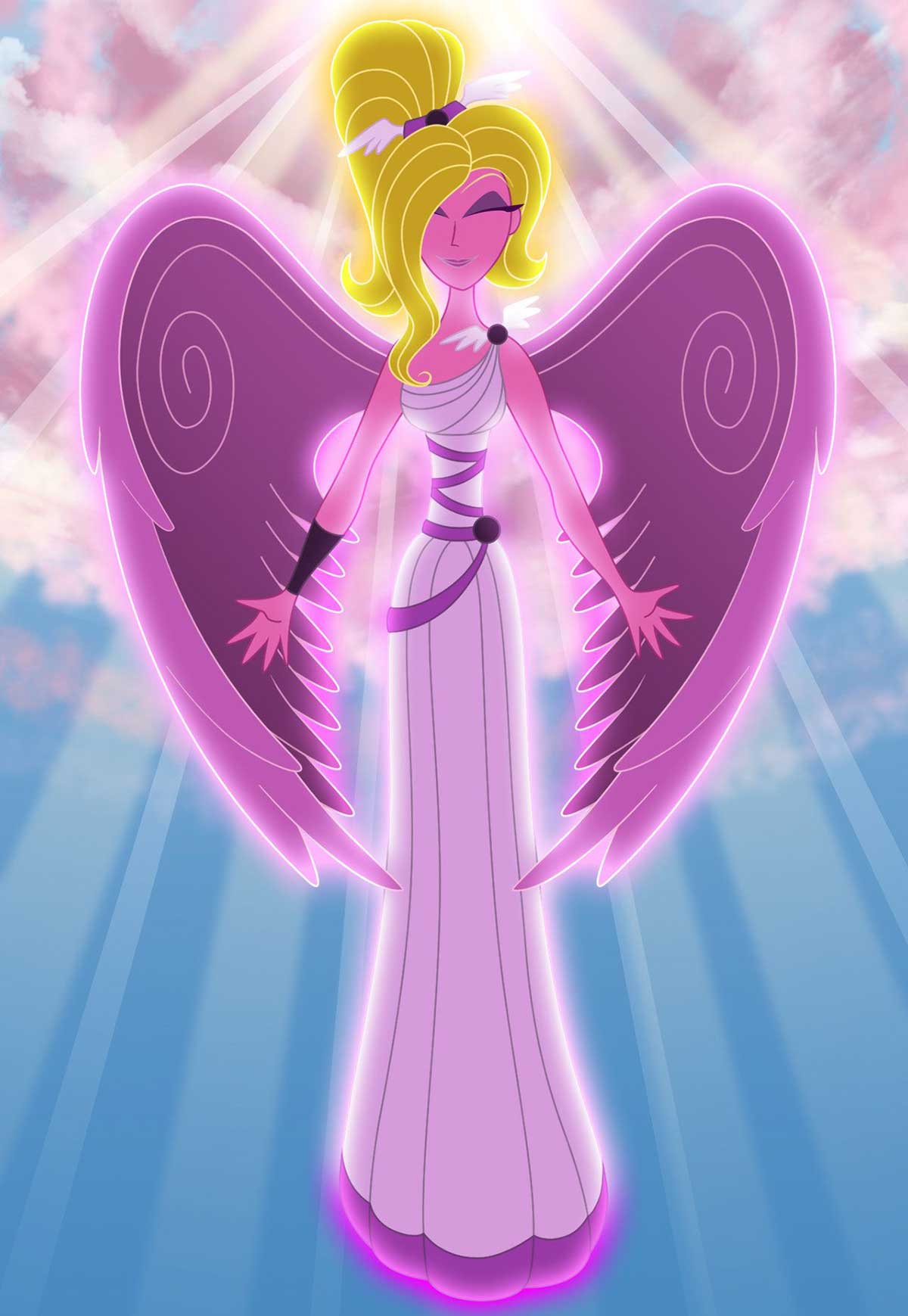
Hades
🗝 Hades :: Greek God of the Underworld
Hades is the Ancient Greek god of the Underworld, the place where human souls go after death. In time, his name became synonymous with his realm. It has to be said unsurprisingly – since he barely left it. Appropriately, the most significant myth related to Hades concerns one of the very few times he did – to abduct Demeter’s daughter, Persephone.
Hades’ Role
Hades' Name
Hades means “The Unseen One” – a suitable name since Hades is the ruler of the invisible world. However, the Ancient Greeks rarely used this name – just like Christians rarely used the word “Hell” during the Middle Ages. So, since minerals and precious metals are found underground, they often referred to Hades euphemistically as Plouton – namely, “The Wealth-Giver.” Unsurprisingly, Hades’ Roman equivalent is called Pluto as well.
Hades' Portrayal and Symbolism
As the ruler of the dead, Hades was a grim and ghastly figure, inspiring awe and terror in everybody. Consequently, he was rarely depicted in art. When he was, he was most commonly portrayed with a beard, and a solemn, mournful look. He frequently wears a helmet, named the Helm of Darkness or the Cap of Invisibility. Cerberus, the three-headed dog which guarded the entrance to the Underworld, is usually beside him. Every so often he carries a scepter or holds the key to his kingdom. At a later stage, he became associated with his weapon of choice, the bident, a two-pronged fork modeled after Poseidon’s trident. As Plouton, he was sometimes shown with a cornucopia, the horn of plenty.
Hades' Epithets
Among the Ancient Greeks, Hades was known as “the Other Zeus.” Homer even calls him “The Infernal Zeus,” in addition to “the grisly God.” He was also called “the host of many” or “the Attractor of Man” – since all men eventually went to serve him.
Hades' Biography
Hades' Birth
Hades was the fourth child of the Titans Cronus and Rhea (after Hestia, Demeter, and Hera), both the oldest and the youngest male sibling. In other words, he was the first of the three brothers (Hades, Poseidon, Zeus) to be born and swallowed by his father, but the last one to be regurgitated.
Titanomachy and Hades
After being rescued by Zeus from the belly of Cronus, Hades joins him in the Titanomachy. Eventually, the decade-long war ends with a victory for the Olympians. Hades, Poseidon, and Zeus cast lots to decide who of the brothers will rule which domain. Hades gets the underworld.
Hades' Wife
Since Hades was a fearsome deity who rarely left his kingdom, there are very few myths about him in Ancient Greek sources.
The Abduction of Persephone
By far the most important myth is Hades’ abduction of Persephone, Demeter’s daughter. That was one of the few times Hades traveled above ground. The reason, naturally, was love: he fell for Persephone. However, Persephone didn’t want to give in easily, so Hades devised an ingenious ploy. As Persephone was gathering flowers with her maidens at the Nysian plain, he caused an indescribably beautiful flower to suddenly bloom before her. When Persephone reached out to pluck it, the ground under her opened and Hades appeared before her, all dreadful and majestic in his four-horse golden chariot and took her with him to the Underworld.
Demeter, the goddess of fertility, was so distressed at the absence of her daughter, that she started fasting and wandering aimlessly. Finally, after nine days, Hecate told her what happened. After the All-Seeing Helios confirmed the event, Demeter left Olympus as an act of protest against the injustice done to her.
With her gone, the earth was as barren and infertile as a desert. One year passed, and the gods started worrying that the famine would wipe out humanity. So Zeus sent all the gods, one by one, to beg Demeter to come back, promising her all kinds of gifts and functions. She wanted none; the only thing she wanted was to see her daughter once again.
So, Zeus had no choice but to send Hermes to Hades with the request that he return Persephone to Demeter. He complied, but only after making Persephone eat one pomegranate seed before leaving. This ensured that she would remain bound to his kingdom eternally.
Winter and Spring
Now, both sides had no choice but to accept Zeus’ compromise: Persephone would spend two-thirds of the year with her mother, but one-third of it with Hades. And this is the part of the year which corresponds with the winter months: they say that Demeter retreats from Olympus to her temple at Eleusis to grieve the absence of Persephone. Every spring Persephone would be reunited with her mother Demeter marking the season of rebirth.
It’s possible that Hades and Persephone didn’t have any children. However, some say that Zagreus may have been their son. Macaria is also claimed to have been Hades’ daughter – but no mother is mentioned.
Hades in the Bible
As the realm of the dead, Hades is mentioned ten times in the “New Testament” in its original Greek text. Older translations – such as the King James Bible – invariably translate it as “hell.”
Hades: Myths and Hidden Truths
While Hades is often depicted as a ruthless, cold-hearted ruler, his character is more complex and often misunderstood. Contrary to popular belief, Hades was not the embodiment of evil or the judge of the dead; rather, he was a strict but fair ruler, ensuring that the souls who entered his domain were treated according to their deeds in life.
Hades and Thanatos
Hades is sometimes confused with the Greek god of death, Thanatos, their roles and responsibilities were distinct. Hades was the overseer of the Underworld, while Thanatos was responsible for the act of dying and guiding souls to the afterlife. In essence, Hades was a vital part of the natural cycle of life and death, maintaining order and balance.
Plouton
As we delve deeper into the realm of Hades, some lesser-known aspects of his life and mythology come to light. For example, it is worth noting that Hades was not always associated with the Underworld. In early Greek mythology, Hades was considered a god of wealth and abundance, reflecting the riches found within the earth's depths. This connection can still be seen in his epithet, Plouton or "Wealth-Giver."
Hades' Infrequent Worship
Unlike other gods in the Greek pantheon, Hades had very few dedicated temples and was not commonly worshiped by the general public. This was because the Ancient Greeks were cautious about invoking his name, fearing that it might draw his attention and bring misfortune. However, there were some mystery cults, such as the Eleusinian Mysteries, that included rituals associated with Hades and the Underworld.
Hades: Unveiling the Enigmatic God of the Underworld
As we delve into the enigmatic world of Hades, the Ancient Greek god of the Underworld, we find ourselves drawn to the dark, mysterious, and often misunderstood figure. Ruler of the invisible realm where souls reside after death, Hades has long been a symbol of the unknown and the unseen. The compelling myth of his abduction of Persephone, with its themes of love, despair, and the cycle of life and death, serves as a powerful reminder of the complexities and contrasts inherent in nature.
Personally, exploring Hades' tale has left a profound impression, as it highlights the inexorable passage of time and the delicate balance between light and darkness that we encounter in our own lives.
Hades Sources
Read the story of the abduction of Persephone as the Ancient Greeks did: it’s fully recounted in the “Homeric Hymn to Demeter.”
Hades Video
Hades Q&A
Hades Associations
Link/Cite Hades Page
Written by: The Editors of GreekMythology.com. GreekMythology.com editors write, review and revise subject areas in which they have extensive knowledge based on their working experience or advanced studies.
For MLA style citation use: GreekMythology.com, The Editors of Website. "Hades". GreekMythology.com Website, 19 Apr. 2023, https://www.greekmythology.com/Olympians/Hades/hades.html. Accessed 25 April 2024.




